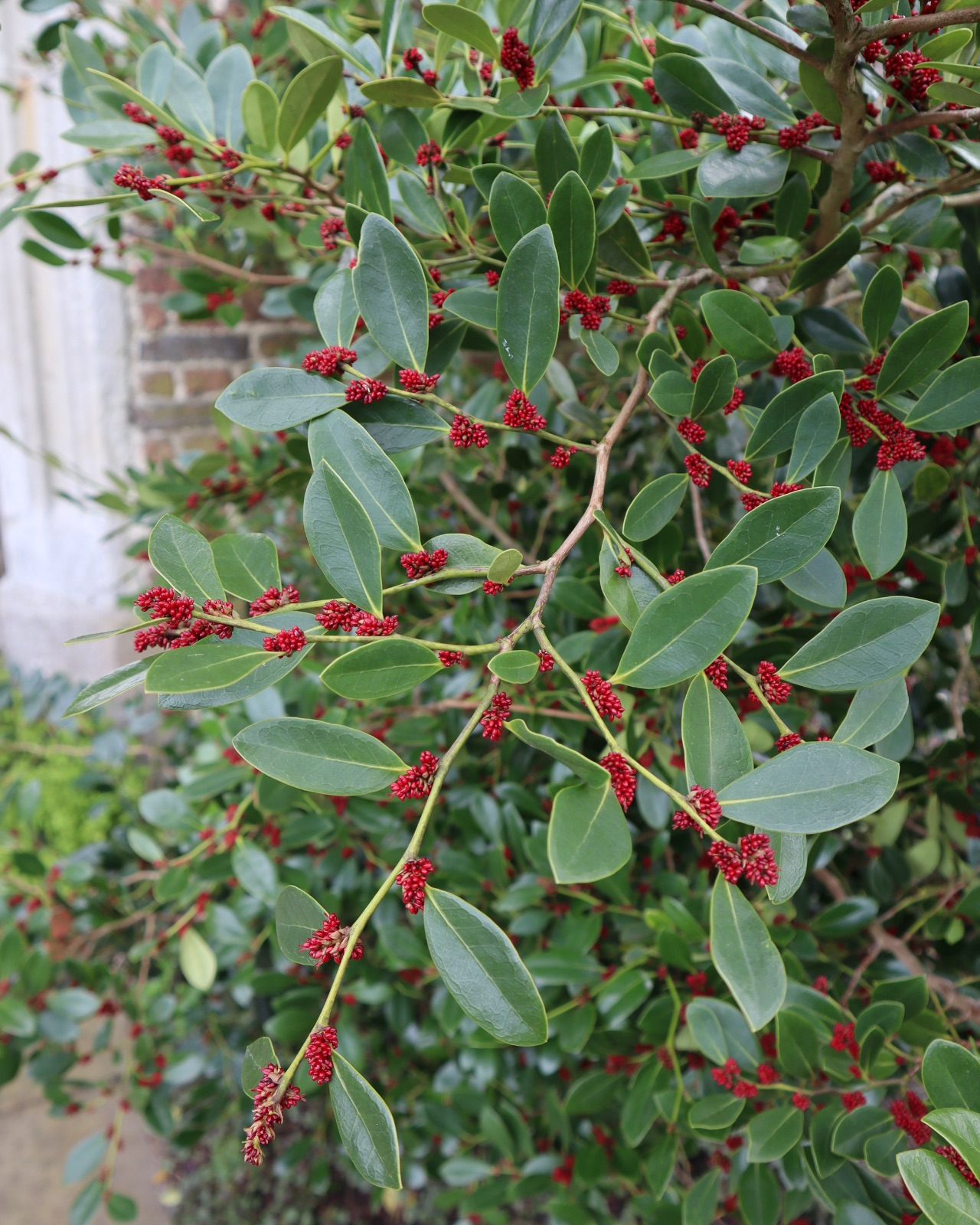Distylium
Credits
Article from Bean's Trees and Shrubs Hardy in the British Isles
Recommended citation
'Distylium' from the website Trees and Shrubs Online (treesandshrubsonline.
Family
- Hamamelidaceae
A genus of about eight species of evergreen trees and shrubs in China, Japan and the Indo-Malaysian region. The species described below is one of three evergreen members of the witch-hazel family cultivated in the British Isles and the most common, though all are rare. The following combinations of characters distinguish them: flowers apetalous, in slender racemes – D. racemosum; flowers apetalous, in clusters – Sycopsis sinensis flowers with white petals – Loropetalum chinense.
From the Supplement (Vol.V)
D. racemosum also occurs in south-eastern and central China, and it is probable that the plant at Kew by the Victoria Gate is of this provenance. It flowers much earlier than April-May, the usual time for plants from Japan.

